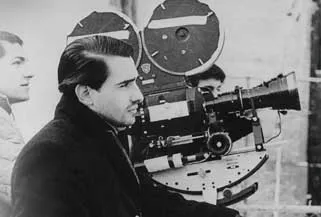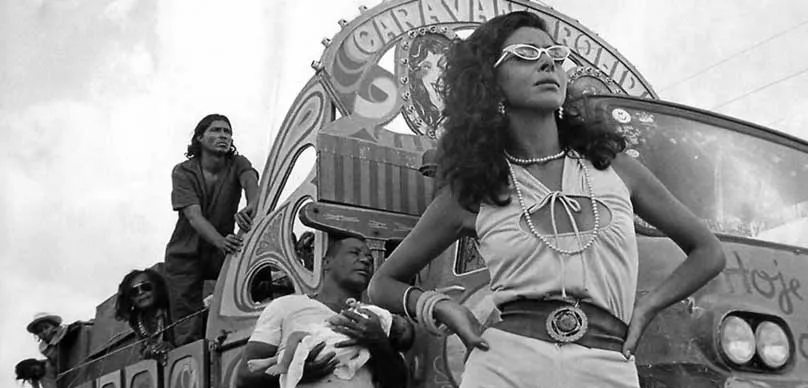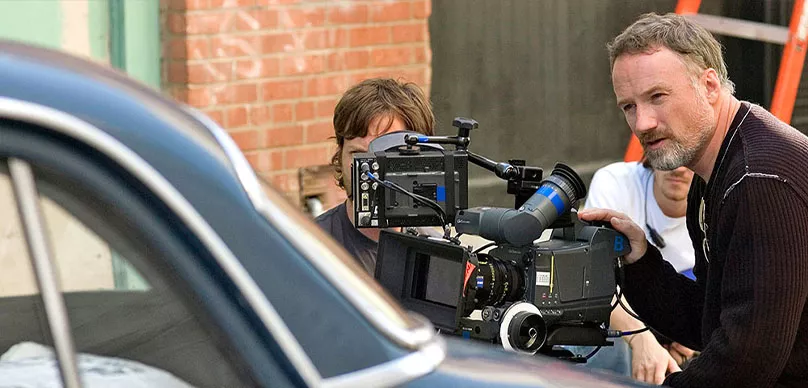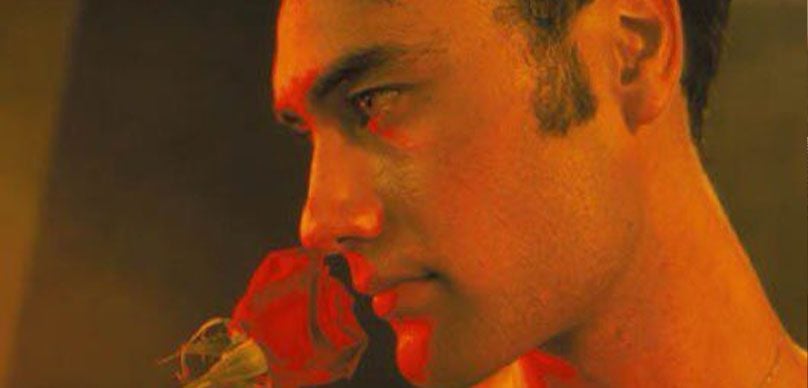By the early 1960’s, some Brazilian filmmakers had their fill of traditional Brazilian cinema, which consisted of Hollywood-style epics, musicals, and comedies. A group of filmmakers decided that it was time to create something new and different, which was dubbed the Cinema Novo Movement (1963-1974).
This new, different, and oft-times subversive style of filmmaking, was inspired by Italian Neorealism and French New Wave, was more political in nature than its predecessors, espoused Socialist and Marxist themes, and would rise in popularity and prominence alongside Brazilian Presidents Juscelino Kubitschek and Joao Goulart.
Cinema Novo focused the plight of Brazilian’s poor and forgotten masses and eschewed the lives of the rich and the powerful. It took take aim at anyone in power, including slumlords and insensitive politicians and promoted class warfare, much like like the Oscar winning Parasite.
The first instance where Brazilian films began to gain a consistent level of positive critical reception outside of Brazil is understood to be Cinema Novo. Cinema Novo is popular among academics because it is a movement with political, philosophical, and historical meaning. The films focused on social and political problems in Brazil in an effort to promote economic reform.
The filmmakers of Cinema Novo never produced films consciously, which is part of the problem with this timeline. The style of cinema is cinema. Although Cinema Novo has been associated with certain moviemakers, with an ideal and with an aesthetic form, it was not the intent of the filmmakers to create a new movement.
Cinema Novo is a term that scholars and film critics use retroactively to describe and organize films of that era. It wasn’t an enclosed form of expression that allowed for a specific group of directors to make films. It was supposed to be open to anyone who made films in this style, but it wasn’t.
The film show life was influenced by Italian Neo-Realism and like it, the production process included the use of non-actors. Brazilian directors were influenced by the French New Wave and the Auteur style. French New Wave?s low budget and independent production methods caught the attention of Brazilian directors.
The phrase
“uma camera na mo, uma ideia na cabea?”
has become synonymous with the fusion of these two principles. There are very little ideas and little money to do them.
The aesthetic of hunger was created from the lack of capital that characterized Cinema Novo. The same name was published in 1965, by Glauber Rocha. The aesthetic was adapted to the reality of the country.
The demands of the modern European cinema d?auteur are commented on by the film director. The production of values, and narrative codes was denied. acquired in Brazil, an anticolonialist thrust.
The form of the movie was the reason for the principle. The ways in which it is made should reflect the subject matter. Rocha held that hunger in Latin America is more than just a symptom, it is the core of our society. Cinema Novo is unique in relation to world cinema.
“Our hunger is felt but not understood as our greatest misery.”
He believed that hunger had been misinterpreted by the more developed outside world. Hunger is seen as a means to engage with nostalgia for the primitive. Hunger has been avoided but only through clear cultural engagement with hunger can it be understood.
The Aesthetics of Hunger had a special focus on violence and Rocha said it was the most noble form of hunger. He holds that Brazil is still a colony and only through violence will the colonized realize it.
The aesthetic of hunger focused on hunger through form. Subject matter is low cost production The film style is known as the?aesthetic of hunger.? Cinema Novo’s legacy is closely associated with it. It’s important to remember that this is not a representation of all films.
The Three Phases of the Cinema Novo Movement
The Brazilian Nationalist Cinema Novo Movement had three distinct phases:
Phase 1
The First Phase, from 1960 to 1964, focused on the plight of the working class, were often shot in black and white by a hand-held camera, and was stark in its depiction of its themes and settings.
The movement abhorred the use of the lush forests as a scenic backdrop for its stories, but moreover used a variety of settings throughout South America to create and craft a populist message and those create a much broader audience.
It also integrated divisive topics such as social inequality and racial unrest, which unfortunately, in the minds of the filmmakers, could only be solved through violent and aggressive means.
Phase 2
The Second Phase, which lasted from 1964 to 1968, was a reaction to the ouster of President Joao Goulart and was a reflection of the disillusionment in their country. It would be during the second phase that the first Cinema Novo film would be shot and released in color, which was The Girl From Ipanema (1968).
The coup left Goulart supporters stunned by how bloodless the coup was. This led to a lot of recrimination about responsibility for key errors. It’s understandable, considering that the military had no resistance at all, and there were no signs of fighting when the coup began.
Cinema Novo filmmakers were also affected by this disarray. The rise of the left-wing policies of the Joo Goulart?s administration wiped away the optimism they had. Many Goulart?s policies were rolled back by the policy-makers of the military regime to combat inflation.
The orthodox stabilization plan, which was successful in fighting inflation, led to a fall in real wage rates and public spending cuts.
The abandonment of Cinema Novo’s rejection of commercialism was one of the major changes during the second phase. Although the movement’s roots sought to disassociate art from commercialism, in the mid-1960s a debate emerged about the ability of Cinema Novo to sustain itself without a broader appeal. Military regimes’ conservative modernization of the media led to the improvement of other cultural production methods.
Cinema Novo films were not able to take full advantage of the new technology. This higher rate was due to increased risk of a Cinema Novo movie being commercially unsuccessful and, therefore, economically unviable for the producer or distributor.
Critics also looked at its style. The Brazilian Modernist Movement of the twenties, which called in theory for a democratization of art but in practice remained an elitist form of expression, was not the same. The movie Menino de Engenho [Plantation Boy] was an example of a movie that sought greater appeal because it was an adaptation of a novel.

Want to watch more short films by legendary filmmakers?
Our collection has short films by Martin Scorsese, Quentin Tarantino, the Coen Brothers, Chris Nolan, Tim Burton, Steven Spielberg & more.
Phase 3
The Third Phase of the Cinema Novo Movement, which lasted from 1968-1972, was unfocused, with a hodgepodge of settings, themes and characters and was referred to as the “cannibal-tropicalist” phase.
Nowhere was this “cannibal-tropical” element evident than in the film How Tasty Was My Little Frenchman (1971), which featured the protagonist being abducted and eaten by cannibals, which was a veiled, yet extreme metaphor for how Brazilians should treat outsiders who would try to cannibalize Brazilian life and culture, much like today’s gentrification.
It was also a phase that saw the films reflective of the movement to appear more polished, with higher production values and seemed to abandon its trademark grittiness and the realism.
It seemed as though Cinema Novo was reverting back to the lush, tropical settings seen in films before the movement’s advent. It was a movement in a death spiral; a desperate attempt to recreate its former glory via Cinema Marginal, but would end shortly thereafter.
Europe constructed an imaginary of salvation and of plenty as the telos of its spectacular migration to the tropics, the promise of redemption in the New World, the American Dream. The Brazilian cinema brought back on a different register between 1964 and 1974 because of an alliance between the Christian theology of salvation and military pragmatism.
The imaginary constructs are inverted for filmmakers to argue that the Utopian voyages were a preamble to hell rather than paradise.
The movie “Como era gostoso meu frans” is an example of how directors like to allege Brazilian history and create a product filled with critical political messages.
Directors of the Cinema Novo Movement
Prominent directors of the Cinema Novo Movement included:
- Mário Carneiro
- Joaquim Pedro de Andrade
- Carlos Diegues
- Nelson Pereira dos Santos
- Ruy Guerra
- Leon Hirszman
- Gustavo Dahl
- Arnaldo Jabor
- David Neves
- Glauber Rocha
- Paulo César Saraceni
- Alex Viany
- Olney São Paulo
Filmography
First phase
- Aruanda(1960)
- Arraial do Cabo (1960)
- Barravento (1962)
- The Unscrupulous Ones (1962)
- Barren Lives (1963)
- Porto das Caixas (1962)
- Black God, White Devil (1964)
- Os Fuzis (1964)
- Ganga Zumba (1963)
- Vidas Secas (1963)
- Deus e o Diabo na Terra do Sol (1964)
- Cinco Vezes Favela (1962)
- Os Cafajestes (1962)
Second phase
- A Facelida (1965)
- São Paulo S.A. (1965)
- The Challenge (1966)
- A Grande Cidade (1966)
- O Desafio (1966)
- O Padre e a Moça (1966)
- A Hora e Vez de Augusto Matraga (1966)
- Menino de Engenho (1966)
- Terra em Transe (1967)
- Entranced Earth (1967)
- Garota de Ipanema (1967)
- Hunger for Love (1968)
- The Red Light Bandit (1968)
- Fome de Amor (1968)
- O Bravo Guerreiro (1968)
Third phase
- Macunaíma (1969)
- Antonio das Mortes (1969)
- Azyllo Muito Louco (1969)
- Os Herdeiros (1969)
- Of Gods and the Undead (1970)
- How Tasty Was My Little Frenchman (1971)
- Pindorama (1971)
- Os Inconfidentes (1972)
- São Bernardo (1972)
Cinema wasn’t popular in Brazil because it wasn’t enough for mass consumption and it wasn’t enough for a proper understanding of the history of Brazilian film. Cinema Novo is a representation of a school of thought within Brazilian Cinema from the late 1950s to the early 1970s, but it should not be taken as an entire history of film.
Cinema Novo’s reach is extensive and it has served to open up the country to foreign eyes due to its high critical praise and popularity among intellectuals and film critics from all over the world.








